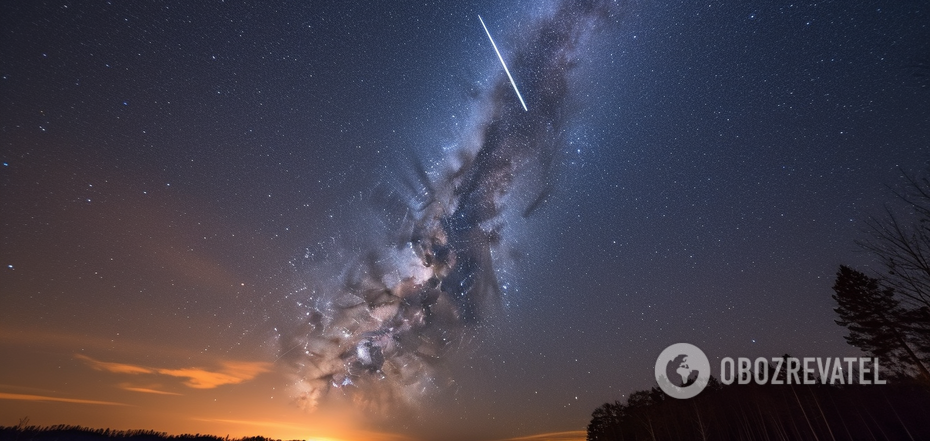Life
New bright flare possible over Kyiv, and not just one: how long will the Lyrid meteor shower last and when will it peak
Yesterday's flash in the sky over Kyiv scared and amused Ukrainians at the same time. But scientists warn that it is likely to happen again.
According to the State Space Agency, the event of April 19 was not a satellite crash, as was suggested on social media. And OBOZREVATEL reported that right now the Earth is passing through the Lyrid meteor shower.
What the State Space Agency said
According to the Main Centre for Special Control of the State Space Agency, an unknown space object was spotted over Kyiv at around 22:00. Experts determined the exact time of the outbreak as 21:57. It was at this moment that the infrasound means of the GSCC registered a high-energy acoustic event on the territory of Ukraine. "The estimated location of the explosion epicentre is in the Kyiv region. The event is likely to be associated with the entry of a space body into the dense layers of the atmosphere, the information is being clarified," the SCA explained.
At the same time, experts denied the assumption that the outbreak could have been caused by the US RHESSI satellite de-orbiting. The spacecraft is expected to fall to Earth on April 20, but the area where it will fall is located far beyond Ukraine's borders.
"Most likely, the outbreak was caused by a meteorite falling from the Lyrid stream," the SCA added.
What are the Lyrids?
The Lyrid meteor shower has been known to mankind for a very long time - about 2700 years. Every year, earthlings can observe it at the end of April. At the moment, our planet is passing through the belt of the remnants of comet C/1861 G1 Thatcher, which form this stream. Some of them can enter the atmosphere and look like stars falling from the sky. Moreover, the specificity of this particular meteor shower is that its space objects do not leave a plume when they burn in the atmosphere, but look like a fireball. Just like yesterday's phenomenon.
To observe the Lyrids, experts recommend finding a place away from any powerful light sources, including street lamps, and lying down on the ground with your feet facing east. After about 30 minutes of observing the night sky, your eyes should adapt to the darkness and you may notice stars falling from the part of the sky where the constellation Lyra is visible. The intensity of such a starfall at the peak time is approximately 10-20 stars per hour.
The approximate period when you can observe the Lyraids is from 19-25 April annually. The peak days are on the 21st and 22nd.
Earlier, OBOZREVATEL reported that the meteor shower was recorded not only in Ukraine on April 19.
Subscribe to OBOZREVATEL's Telegram and Viber channels to keep up with the latest news.



























